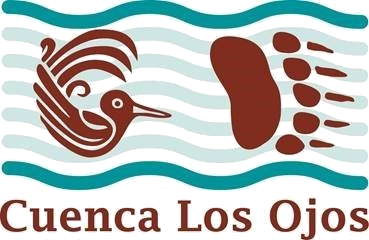
Documenting Ecological Value
For more than 30 years, researchers and scientists have utilized Cuenca Los Ojos to better our understanding of ecology, biology, hydrology, geology, and more. Over 50 journal articles, conference papers, and theses have communicated these findings to a broader audience. Among the notable findings:
Ecology and Biology
Cuenca harbors some of the greatest bee diversity documented anywhere in the world. 435 species were identified in an 8,000-ac study site on Rancho San Bernardino (Minckley & Asher, 2012). While there was greater abundance of bee species in ungrazed habitats, there was a greater proportion of rare species in grazed areas (Minckley, 2014).
There is an estimated population of more than 500 black bears in the Sky Island region. Without protected areas like Cuenca providing wildlife corridors between the US and Mexico, the black bear population in the Sierra San Luis (Mexico’s largest population) will become isolated from the US population, and therefore vulnerable to multiple threats (Lara-Diaz et al., 2013). The black bear’s range has decreased 80%, and black bear occurrence was found to be higher on private reserves (Lara Diaz, 2018).
The cougar population in the Sierra San Luis is likely to be functioning as a source population for the Mexican Sky Islands. Protected areas like Cuenca can serve as a wildlife corridor between the US and Mexico (Gonzalez-Bernal et al., 2011).
Riparian Restoration and Hydrology
The San Bernardino ciénega, once the most extensive in the region, is mostly dry today, and the water table remains approximately 5 meters below the surface. The ciénega was degraded through the process of arroyo cutting, the incision of channels into what was once a flat, homogenous surface. These channels drained the wetlands and interrupted the sheet flooding process that once occurred during the monsoon season. Once a ciénega is degraded, it requires active restoration, a process that Cuenca has been undertaking since the mid-1990s (Minckley et al., 2011; Minckley & Brunelle, 2007; Minckley et al., 2013a).
Erosion control structures (ECS), such as trincheras and gabions, slow the speed of water, allowing time for the water to infiltrate into the soil. Watersheds restored with ECSs have lower runoff following heavy precipitation events; a comparison found that a restored watershed had half the runoff of an unrestored watershed. During a heavy rain event - 150 times average rainfall - the restored watershed showed no significant sand or silt deposits and the water flow was relatively clear (Norman et al., 2016).
Even though peak flow during precipitation was lower, overall flow volumes were higher in the restored watershed. Rainwater was absorbed into the soil and slowly released, which created positive effects on the stability and consistency of surface water flow downstream. The positive effects extended up to 6 miles downstream, providing more surface water for downstream neighbors (Norman et al., 2016).
During a long-term drought, a riparian area restored with gabions increased in vegetation over a 10-year period following ECS installation. In contrast, the control area - an unrestored riparian area - decreased in vegetation. This finding indicates that restoration with ECSs makes riparian areas more resilient to drought (Norman et al., 2014).
Carbon Sequestration
Preliminary studies of watersheds with and without ECSs found that the restored riparian areas stored at least twice as much carbon at a depth of 4” and at least 10 times as much carbon at a depth of 12”. Relative to newer ECSs, soils and sediments that accumulated behind older structures were more enriched in microbially-processed biomass. Microbial processing is thought to draw down gaseous CO2 from the atmosphere or soil, storing it in a solid state.
A list of publications is available on our research bibliography page.
